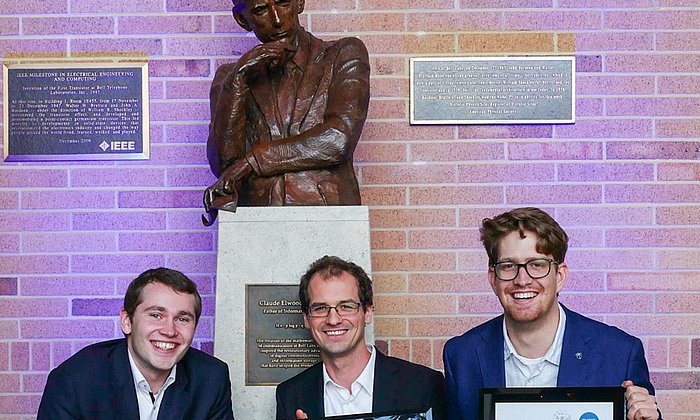Record data transfer speed in fiber optic network using TUM algorithm
New speed record set under real-world conditions

Apart from speeding up mobile internet access, the new 5G mobile communications generation will pave the way for such applications as reliable networked communications between industrial robots. A basic requirement for 5G will be fast data networks. In an intercity field experiment between Munich and Regensburg, the network operator M-Net and the telecommunications company Nokia have achieved a big milestone for data transmission via fiber optic cable under real-world conditions: a transfer speed of 500 gigabits per second (Gbit/s) with a single wavelength.
Fiber optic cables consist of thousands of strands. Data are transmitted through each of these tiny fibers in the form of infrared light pulses. A big factor behind the high transmission capacity of a fiber is that an individual signal does not require the full light spectrum carried by the fiber. Each signal uses only one wavelength. This allows every fiber strand to be further divided into more than 100 channels. Consequently, a data transfer rate of 500 Gbit/s for each wavelength would result in an overall transmission capacity of more than 50 terabits per second (Tbit/s: 1 Tbit = 1000 Gbit). According to Nokia and M-Net, transfer rates over shorter distances can even reach 600 Gbit/s for single wavelengths, resulting in a total data transfer capacity of 76.8 Tbit/s.
Optimized data transfers thanks to probability theory
Even in fiber optic cables, these fast speeds are possible only with the right data transmission technology. That's where probabilistic constellation shaping (PCS) comes in. This method, developed around five years ago at the TUM Department of Electrical and Computer Engineering, uses probability theory to bring about the optimal balance of transfer speed, reliability and energy use for every signal. It also applies error correction methods to reach even higher data transmission rates.
In December 2015 the three inventors of the RateX PCS algorithm were awarded one of the prestigious Bell Labs Prizes. In 2016, a field experiment using PCS even achieved a transfer rate of 1 Tbit/s for a single wavelength. By contrast, the recent Regensburg/Munich experiment was conducted under real-world conditions, with the signal transmitted across approximately 320 kilometers of existing fiber optic cables. M-Net became the first network operator to test a Nokia signal processor that uses PCS technology.
Fast Transfer from research to application
“It is truly remarkable for a new algorithm to be used in products within just five years,” says Professor Gerhard Kramer of the Chair of Communications Engineering at TUM, where PCS was invented. “Without doubt, one reason for this is the fact that PCS permits a significant increase in data transfer rates without having to make changes to the cables themselves. Furthermore this is indicative of the extraordinary quality of the algorithm.”
More Information:
Contact:
Prof. Dr. Gerhard Kramer
Technical University of Munich
Chair of Communications Engineering
+49 (89) 289 - 23491
gerhard.kramer@tum.de
Technical University of Munich
Corporate Communications Center
- Paul Hellmich
- paul.hellmich@tum.de
- presse@tum.de
- Teamwebsite

